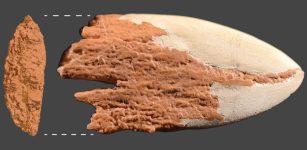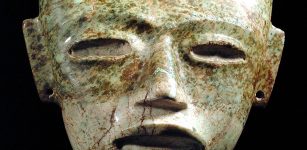Sayyida Al Hurra – Feared And Respected Pirate Queen Of Morocco Had No-One To Turn At The End
Ellen Lloyd - AncientPages.com - In 1492, the Catholic Monarchs Isabella I of Castile and Ferdinand II of Aragon succeeded in taking control of the Iberian Peninsula, and capture Grenada.
Those who refused to convert to Christianity were forced to flee. Among the refugees from Grenada was a little girl named Sayyida who took sought refuge with her parents and relatives in Morocco.
Portrait of Sayyida Al-Hurra. Credit: Public Domain
Sayyida was only 2 years old when she found a new home in a foreign country. Being a family member of Banu Rashid, a powerful and wealthy tribe she could enjoy a happy and secure childhood. Yet, Sayyida could never forget and forgive the humiliation of being forced to leave Grenada. When she grew up, she became a fierce enemy of the Christians and she sought revenge on the Spaniards.
Who Was Sayyida Al Hurra?
Her real name has been lost to history, but she is today known as Sayyida al-Hurra, which means “noble lady who is free and independent; the woman sovereign who bows to no superior authority”. At the age of 16, Sayyida al-Hurra (1485 – 1561) married Ali al-Mandri, a much older man who was also a refugee from Andalusia. Her husband, who was a friend of her father was a governor of the city of Tétouan in northern Morocco. It should be added that some sources state she married his son.
Regardless of which one she married, it is known that Sayyida who was an intelligent woman advised her husband, assisted him in his business affairs, and became involved in politics.
Through her participation in many important meetings, Sayyida met many powerful people who later played a significant role in her life. One of them was the sultan of Morocco, Abu al-Abbas-Amhad ibn Muhammad of the Wattasid dynasty who gave her permission to rebuild the city of Tétouan that had been destroyed by the Castilians around 1400.
After her husband died, Sayyida al-Hurra succeeded as governor of Tétouan, and declared herself the sole ruler of the city. According to Hasna Lebbady, author of Feminist Traditions in Andalusi-Moroccan Oral Narratives, “she knew what needed to be done under different circumstances and these are the kinds of qualities that would have made her a leader.”
Sayyida Al-Hurra Begins An Adventurous Life As A Pirate
“During Sayyida’s time, women under sharia law had more freedom than women under many Western legal systems. For example, traditional interpretations of sharia law said that Islamic women could divorce, keep their surnames after marriage, and handle their own financial affairs,” Laura Sook Duncombe writes in her book Pirate Women.
In 1541, Sayyida married Ahmed al-Wattasi, a Sultan of the Moroccan Wattasid dynasty. This was the beginning of a new chapter in her life. She could have lived a comfortable life and enjoy political success, but she wanted more. Memories from the past haunted her and she could not forget what the Spaniards had done to her family. She could not let go of Grenada and the fact she was forced to leave.
Though she had only been a small child at the time, historians think much of her hatred came from overhearing adults’ discussions during her childhood. Many exiles kept talking about taking revenge on the Spaniards and her head was filled with ideas on how to fight the Christian invaders, as they were seen through her eyes. In her wish to avenge herself on the "Christian enemy", she turned to piracy and contacted the famous Ottoman pirate Barbarossa of Algiers.
When Barbarossa (1475 – 1536) met Sayyida al-Hurra he was first amused. His attitude changed quickly as he realized this was an extraordinary woman one must respect. Sayyida al-Hurra led several successful pirating operations in Gibraltar, and she kept dreaming of returning to Andalusia one day. Her dream was never fulfilled.
Credit: Pattapol R. Tedngamtoun, enti.ma
Since Morocco did not have a navy and the country depended on “privateers to defend the coast, it is wrong to call Sayyida al-Hurra a pirate, Lebbady stated. “Many of these privateers were Andalusians who settled in places like Salé and Tétouan. Under the command of Sayidda al-Hurra, they helped her to fend off the aggressive Iberians who were colonizing Morocco and at times enslaving most of the populations.
So Sayidda al-Hurra was doing the same thing to the Iberians as they did to the Moroccans. I wouldn’t call her a pirate. To refer to her as a pirate is to put the blame on those who were defending their land from aggressive colonial powers,” Lebbady said. However, other researchers are of a different opinion.
In the book The Forgotten Queens of Islam, Fatima Mernissi wrote that Sayyida al-Hurra became the “undisputed leader of the pirates in the western Mediterranean.” She was respected by Christians who understood that she had control over the Mediterranean Sea. Whether she really sailed with pirates whom she commanded, is uncertain but what she obtained from plundering was invested in her city Tétouan.
As a pirate, Sayyida al-Hurra ruled the western Mediterranean for twenty years. Ironically, her carrier was ended by her son-in-law, Muhammad al-Hassan al-Mandri. Sayyida was deposed in October 1524 and stripped of her property and power.
“Despite having been a beloved ruler and bringing prosperity to her subjects for over a quarter-century, she had nobody to turn to in order to protect her claim to the throne,” Laura Sook Duncombe writes.
Being a proud woman, she accepted her fate and retired to Chefchaouen, where she lived nearly 20 years more, until July 14, 1561.
Although Sayyida al-Hurra accomplished so much in her life and turned Tétouan into a prosperous city, there are almost no historical records documenting her deeds.
Written by Ellen Lloyd – AncientPages.com
Copyright © AncientPages.com All rights reserved. This material may not be published, broadcast, rewritten or redistributed in whole or part without the express written permission of AncientPages.com
Expand for referencesMore From Ancient Pages
-
 Dwarf Ninja Ukifune Jinnai’s Toilet Assassination Of Uesugi Kenshin
Featured Stories | Dec 15, 2019
Dwarf Ninja Ukifune Jinnai’s Toilet Assassination Of Uesugi Kenshin
Featured Stories | Dec 15, 2019 -
 Children Of Lir And Aoife’s Curse – Celtic Legend That Inspired The Swan Lake Ballet
Featured Stories | Feb 8, 2024
Children Of Lir And Aoife’s Curse – Celtic Legend That Inspired The Swan Lake Ballet
Featured Stories | Feb 8, 2024 -
 Bronze Age Long-Distance Connections: Baltic Amber In Aššur
Archaeology | May 17, 2023
Bronze Age Long-Distance Connections: Baltic Amber In Aššur
Archaeology | May 17, 2023 -
 Battle Of Himera: New Study That Contradicts Historical Accounts
News | May 24, 2021
Battle Of Himera: New Study That Contradicts Historical Accounts
News | May 24, 2021 -
 Evidence Oldest Bone Spear Point In The Americas Is 13,900 Years Old
Archaeology | Feb 3, 2023
Evidence Oldest Bone Spear Point In The Americas Is 13,900 Years Old
Archaeology | Feb 3, 2023 -
 Controversial Sand Mounds In Australia Are 6,000 Years Old Man-Made Burial Mounds – Radar Scans Reveal
Archaeology | Feb 10, 2018
Controversial Sand Mounds In Australia Are 6,000 Years Old Man-Made Burial Mounds – Radar Scans Reveal
Archaeology | Feb 10, 2018 -
 On This Day In History: Independence Of Lower Canada – Today Quebec – Proclaimed On Feb 28, 1838
News | Feb 28, 2017
On This Day In History: Independence Of Lower Canada – Today Quebec – Proclaimed On Feb 28, 1838
News | Feb 28, 2017 -
 Epi-Olmec: Undeciphered Isthmian Script Of Mesoamerica
Artifacts | Mar 13, 2016
Epi-Olmec: Undeciphered Isthmian Script Of Mesoamerica
Artifacts | Mar 13, 2016 -
 Ancient Skeletons Reveal Britain Suffered From Parasite Infections Since The Bronze Age
Archaeology | Apr 22, 2022
Ancient Skeletons Reveal Britain Suffered From Parasite Infections Since The Bronze Age
Archaeology | Apr 22, 2022 -
 On This Day In History: Dante Alighieri Famous For His ‘Divine Comedy’ Born – On May 9, 1265
News | May 9, 2016
On This Day In History: Dante Alighieri Famous For His ‘Divine Comedy’ Born – On May 9, 1265
News | May 9, 2016 -
 13,000-Year-Old Engraving May Depict First Paleolithic Social Group Of Humans
Archaeology | Dec 4, 2015
13,000-Year-Old Engraving May Depict First Paleolithic Social Group Of Humans
Archaeology | Dec 4, 2015 -
 On This Day In History: Germany Invades Poland – On Sep 1, 1939
News | Sep 1, 2016
On This Day In History: Germany Invades Poland – On Sep 1, 1939
News | Sep 1, 2016 -
 Secrets Of The Serpent Kingdom Revealed On Maya ‘Game Of Thrones’ Altar
Archaeology | Sep 15, 2018
Secrets Of The Serpent Kingdom Revealed On Maya ‘Game Of Thrones’ Altar
Archaeology | Sep 15, 2018 -
 Scientists Closer To Solving The Mystery Of When Animals Evolved
Evolution | Jul 6, 2023
Scientists Closer To Solving The Mystery Of When Animals Evolved
Evolution | Jul 6, 2023 -
 Extraordinary Biblical Frescos Uncovered In Domitilla Catacombs
Archaeology | Jun 3, 2017
Extraordinary Biblical Frescos Uncovered In Domitilla Catacombs
Archaeology | Jun 3, 2017 -
 Legend Of Brigadoon: Mythical Village Where Time Stands Still
Featured Stories | Nov 2, 2016
Legend Of Brigadoon: Mythical Village Where Time Stands Still
Featured Stories | Nov 2, 2016 -
 Sacred Artifact With Mystical Powers – The Legend – Part 1
Artifacts | Apr 24, 2019
Sacred Artifact With Mystical Powers – The Legend – Part 1
Artifacts | Apr 24, 2019 -
 New Method Distinguishes Between Egyptian And Palestinian Glass During Roman Times
Archaeology | Jul 13, 2020
New Method Distinguishes Between Egyptian And Palestinian Glass During Roman Times
Archaeology | Jul 13, 2020 -
 One Of Egypt’s Oldest Christian Churches Discovered By Polish Archaeologists
Archaeology | May 31, 2019
One Of Egypt’s Oldest Christian Churches Discovered By Polish Archaeologists
Archaeology | May 31, 2019 -
 Unique Purbeck Marble Found On England’s Oldest Historic Shipwreck
Archaeology | Jun 14, 2024
Unique Purbeck Marble Found On England’s Oldest Historic Shipwreck
Archaeology | Jun 14, 2024


